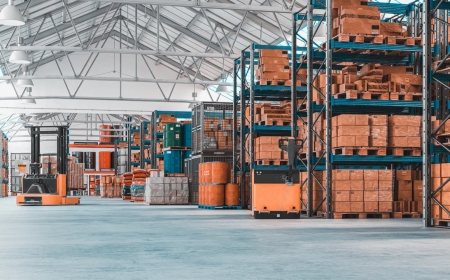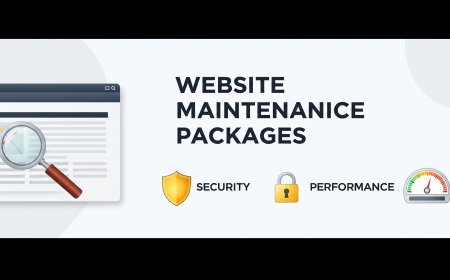Internal Demolition: A Comprehensive Guide
Internal demolition is a critical service in the construction and renovation industry. It allows for adaptive reuse of structures, supports sustainable building practices, and provides the groundwork for modern, functional spaces.

Internal demolition, also referred to as interior strip-out or soft demolition, is a crucial phase in many renovation, remodeling, or repurposing projects. Unlike full-scale demolition, which involves tearing down an entire building, internal demolition focuses on selectively removing elements within a structure while preserving the core framework. This type of demolition is common in residential, commercial, and industrial spaces when the external structure is to remain intact but the interior requires extensive modification.
What Is Internal Demolition?
Internal demolition involves the careful dismantling and removal of non-structural components of a buildings interior. These components may include:
-
Interior walls and partitions
-
Ceilings and false ceilings
-
Floor coverings (tiles, carpet, wood)
-
Fixtures and fittings (cabinets, built-in furniture, etc.)
-
Mechanical, electrical, and plumbing (MEP) systems
-
Windows, doors, and frames
-
Insulation and drywall
The purpose of internal demolition can range from modernizing an outdated space, increasing energy efficiency, to repurposing a building for a different function. It is a highly strategic process that demands planning, safety, and precision.
Types of Internal Demolition
-
Residential Internal Demolition:
Often done during home renovations, this may include removing kitchens, bathrooms, non-load-bearing walls, and flooring to make way for new designs. -
Commercial Internal Demolition:
Offices, retail spaces, and restaurants undergo internal strip-outs to accommodate new tenants, rebranding, or functional changes in layout. -
Industrial Internal Demolition:
Factories and warehouses may need selective demolition to remove obsolete machinery, platforms, or modify production lines. -
Soft Strip Demolition:
This refers specifically to the removal of all non-structural elements before structural demolition or refurbishment. It is common in buildings undergoing major redevelopments.
Benefits of Internal Demolition
-
Cost-Efficient Renovations: Preserving the structural shell reduces construction costs significantly.
-
Sustainable Practice: Reusing the main framework minimizes material waste and promotes green building practices.
-
Design Flexibility: Offers architects and interior designers a blank canvas to reimagine the space.
-
Reduced Disruption: Compared to full demolition, internal demolition creates less noise, dust, and impact on surrounding buildings.
Steps Involved in Internal Demolition
-
Planning and Permits:
A detailed assessment is made, including site surveys, structural evaluations, and obtaining required permits. This also includes identifying load-bearing walls and hazardous materials like asbestos or lead. -
Shut-off Utilities:
Before starting, electricity, gas, and water lines are safely shut off or rerouted to avoid accidents during removal. -
Hazardous Material Removal:
If asbestos, mold, or other harmful substances are present, specialized professionals must handle the removal under strict regulations. -
Selective Demolition:
Non-structural elements are dismantled using tools like jackhammers, crowbars, and saws. Dust and debris are managed throughout the process. -
Debris Removal and Recycling:
All materials are sortedrecyclable, reusable, and waste. Sustainable demolition contractors often repurpose wood, metal, concrete, and fixtures. -
Final Inspection:
Once completed, the space is evaluated to ensure its ready for the next phase of construction or renovation.
Tools and Equipment Used
-
Demolition hammers and drills
-
Angle grinders and reciprocating saws
-
Crowbars, pry bars, and sledgehammers
-
Skid steers, dumpsters, and vacuum systems
-
Personal protective equipment (PPE): gloves, goggles, masks, hard hats
Safety Considerations
Safety is paramount in internal demolition. Contractors and workers must follow OSHA or local safety regulations, which include:
-
Wearing proper PPE
-
Ensuring structural integrity during demolition
-
Securing the site from unauthorized access
-
Monitoring air quality, especially when removing old insulation or mold
-
Proper disposal of hazardous materials
Challenges in Internal Demolition
-
Unknown Structural Issues: Hidden damage or old materials may complicate the demolition process.
-
Hazardous Materials: Discovery of asbestos or lead can delay work and require specialized removal.
-
Access Restrictions: In multi-storey buildings or dense urban areas, moving materials in and out may require additional planning.
-
Noise and Dust Control: These factors must be managed especially in occupied buildings.
Choosing the Right Internal Demolition Contractor
When hiring a contractor, consider the following:
-
Licensing and certifications
-
Experience in similar projects
-
Safety record and insurance
-
Waste disposal and recycling practices
-
Transparent pricing and timelines
-
Customer reviews and past project portfolio
Cost of Internal Demolition
The cost varies depending on factors such as:
-
Square footage of the space
-
Type of materials being removed
-
Accessibility of the site
-
Presence of hazardous materials
-
Disposal and recycling fees
-
Labor and equipment required
Conclusion
Internal demolition is a critical service in the construction and renovation industry. It allows for adaptive reuse of structures, supports sustainable building practices, and provides the groundwork for modern, functional spaces. Whether youre updating your home or transforming a commercial building, proper planning, professional execution, and strict safety measures are essential to a successful internal demolition project.
























































